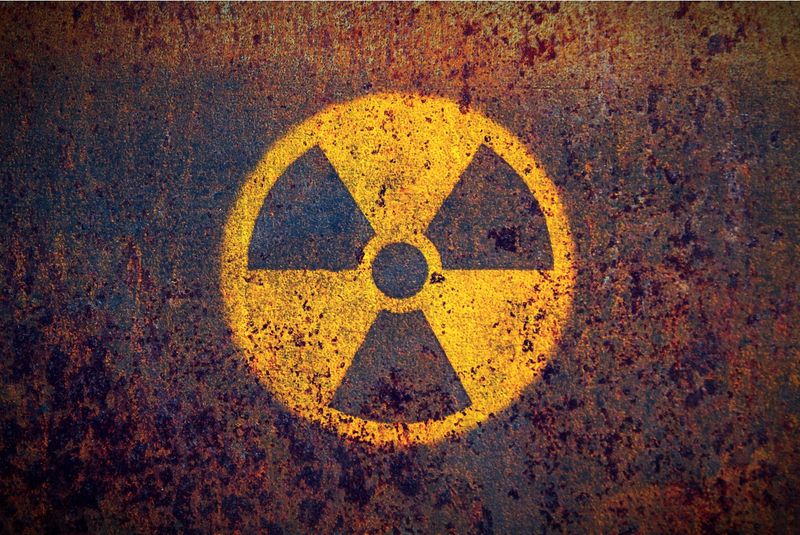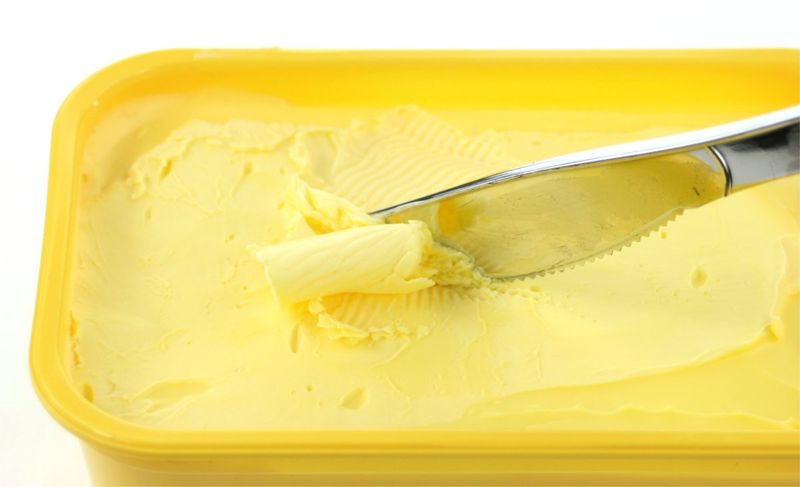18 Common Beliefs From The ’50s That Science Laughed Off Later

The 1950s were a time of sock hops, soda fountains, and poodle skirts twirling to the beat of rock ‘n’ roll. But along with the catchy tunes and chrome-trimmed cars came a wild collection of beliefs that, in hindsight, are downright hilarious.
Imagine a world where doctors lit up cigarettes in the exam room and reassured patients that smoking was “soothing for the lungs.” Or where dinosaurs were thought to be dimwitted, lumbering beasts that couldn’t outsmart a turtle.
Science has since come along and said, “Hold my lab coat,” clearing up the confusion. But there’s something charming about these old ideas—part nostalgia, part head-scratching wonder.
How did anyone actually believe this stuff? So buckle up, adjust your cat-eye glasses, and let’s take a time-traveling stroll through 18 of the most amusing, misguided, and fascinating 1950s beliefs that will have you laughing, learning, and maybe even questioning a few modern ones, too.
1. Smoking Is Good for You

Doctors actually recommended cigarettes in the 1950s! Ads claimed they soothed your throat and “aided digestion.” Picture doctors in white coats puffing away, claiming it was the best way to relax. Turns out, it was more a fast track to lung cancer than relaxation.
Whoops! The image of a doctor recommending a pack-a-day habit seems ridiculous now. It’s a stark reminder of how science and medicine evolve over time. Could you imagine lighting up in a hospital today? Yikes! Now we know better, and the modern health guidelines couldn’t be clearer: put the cigarette down and step away slowly.
Always amusing to look back and think about how far we’ve come, society-wise. So next time someone tells you about the latest health trend, just think back to the ’50s, where smoking was basically the kale smoothie of the day.
2. Radiation Is Totally Chill

In the 1950s, radiation was treated like a quirky party trick rather than a perilous health risk. People played with radioactive toys, used radium face creams, and even drank radium water. Imagine giving your kids a toy that glows because it’s radioactive.
Glowing skin wasn’t just a compliment—it was a health hazard. Today, this sounds like the plot of a horror movie. Back then, it was just Saturday. Nowadays, we know to keep our distance—unless you’re a superhero in the making. If only they knew the dangers, maybe we’d have fewer stories about glowing in the dark.
Our modern understanding of radiation reminds us just how much science has illuminated our path to better health and safety practices. At least we can say that some things do glow up, but not in the way they expected.
3. Dinosaurs Were Slow, Dumb Lizards

Back in the day, scientists believed dinosaurs were sluggish, slow-moving swamp-dwellers with little brain power. These prehistoric giants were thought to be nothing more than oversized lizards. Fast forward to today, and we know that many were fast, smart, and some even had feathers.
Imagine prehistoric murder chickens roaming the earth! It’s a bird, it’s a plane—no, it’s a raptor! This change in perception is as big as, well, a dinosaur. Now we see them as agile, adaptable creatures, not the lazy lizards of lore.
This revelation has transformed our understanding, showing us how fascinating and complex these ancient creatures truly were. So, the next time you see a bird, tip your hat; you’re witnessing the legacy of those fabled murder chickens, living life at full speed ahead!
4. Sugar > Fat

In the 1950s, fat was demonized while sugar was given a free pass to party! Breakfast cereals were practically candy, and it was a sweet time for sugar lovers. The belief was that fat was the enemy, while sugar was a harmless friend.
Fast forward to today, and science has caught up with sugar’s real health effects. Turns out, sugar isn’t as sweet as it seems. Now we know it can lead to health issues like obesity and diabetes. Oops! It’s a classic case of ‘too sweet to be true.’
Now, instead of loading up on sugary treats, we’re told to watch our sugar intake and embrace healthy fats instead. Who knew? So, the next time you reach for that sugary cereal, remember: the ’50s may have been sweet, but moderation is the real sugar high.
5. Spanking Builds Character

“Spare the rod, spoil the child,” was the mantra of many parents in the 1950s. Spanking was seen as a necessary part of good parenting, building character and discipline. However, studies later linked spanking to increased aggression and mental health issues.
Oops, wrong character-building tool! Turns out, hitting kids doesn’t make them better people; it just makes them angry adults. Today, spanking is more likely to raise eyebrows than well-behaved kids. Science now suggests positive reinforcement and communication work better. It’s a parenting revelation that has flipped the script on discipline.
So, next time you’re tempted to follow the old ways, remember: building character should come from love, not a spanking. Who knew that hugs, not hits, would be the way to nurture the next generation of well-adjusted humans?
6. Left-Handed Kids Need Fixing

In the 1950s, left-handed kids were seen as needing ‘fixing.’ Teachers would force lefties to use their right hands, believing it would benefit them in the long run. Talk about a wrong-handed approach! Science later said, “Let the lefties live!” Turns out, there’s nothing wrong with being left-handed—unless you’re trying to write in a right-handed world!
Now we know that forcing left-handed kids to switch can be detrimental. It’s a left-brain, right-brain thing. Today, being left-handed is just another unique trait to embrace. No more switching pencils to the ‘correct’ hand.
So, let your lefty flag fly high! Celebrate the uniqueness and individuality of being left-handed. After all, some of the greatest minds were lefties, proving once and for all that being different can be a very right thing.
7. Homosexuality = Mental Illness

Back in the 1950s, homosexuality was in the DSM (Diagnostic and Statistical Manual of Mental Disorders) as a disorder. Yup, it was treated as a mental illness—talk about a love that dared not speak its name! Fast forward to 1973, when science caught up with love and removed it from the DSM.
Now we know better: it’s just love, plain and simple. Turns out, love is love, and there’s nothing disordered about it. Today, we celebrate love in all its wonderful forms, without the shadow of outdated beliefs. We’ve come a long way from those days and continue to strive for acceptance and equality.
So, here’s to love in all its beautiful complexity, proving that sometimes, the heart really does know best. After all, who can argue with science and love teaming up for a better world?
8. Housewives Shouldn’t Worry Their Pretty Little Heads

The belief that women’s brains weren’t cut out for math, science, or working outside the home was unfortunately all too common in the 1950s. Housewives were encouraged to focus on home and hearth, leaving the ‘big thinking’ to the men. What a scientific trash fire that was! Today, women excel in every field imaginable, proving that intelligence knows no gender.
It turns out, women can worry their pretty little heads about whatever they darn well please! Society’s understanding has evolved, and women now pursue their passions and talents without barriers. The kitchen is just one of many places women shine.
Breaking down these stereotypes has opened up a world of possibilities for generations of women. So, here’s to everyone using their brains, regardless of gender. Because, as we know now, brains don’t come with gender labels—just infinite potential.
9. Seat Belts Are Dangerous

In the 1950s, car companies argued that seat belts could trap you in a crash. The idea was that you’d be safer being ‘thrown clear.’ Sounds strange now, right? Science later said: actually, they save lives. Buckle up, buttercup!
Today, it’s hard to imagine getting into a car without buckling up. The wisdom of seat belts has become common sense. They’ve saved countless lives and are now a non-negotiable part of car safety. So, the next time you slide behind the wheel, give a little nod to the science that keeps us safe.
Seat belts are one of those inventions that truly changed the world for the better, and we’re all the safer for it. Remember, better safe than sorry—and who knew that a belt could do so much more than hold up your pants?
10. Babies Feel No Pain

Believe it or not, it was once thought that newborns couldn’t feel pain. Yes, babies were operated on without anesthesia. Ouch! It wasn’t until the ’80s that this horrifying practice got the boot. Today, we know better: babies feel pain just like the rest of us.
It’s a chilling reminder of how much we’ve learned about the tiniest humans in recent years. Now, we use anesthesia for even the youngest patients, ensuring they’re as comfortable as possible. Modern medicine treats babies with the care and respect they deserve.
This shift in understanding highlights how far we’ve come in ensuring the welfare of all patients, big and small. So, let’s give a round of applause to the advancements in medicine that protect even the most vulnerable among us. Because everyone deserves a little comfort, especially when they’re brand new to the world.
11. You’ll Catch a Cold If You Go Outside With Wet Hair

Ah, the old wives’ tale: if you go outside with wet hair, you’ll catch a cold. Cute myth. Colds come from viruses, not breezy damp hairdos. It’s one of those beliefs that seemed to make sense at the time. But science eventually stepped in with a reality check.
Viruses are the true culprits behind colds, not the weather or your grooming habits. So feel free to leave the house with wet hair—just remember to grab a hat if it’s chilly! This little myth serves as a reminder of how easily misconceptions can spread.
Now, we rely on good hygiene and health practices to keep colds at bay. So, go ahead, embrace your wet-haired freedom without fear of viral repercussions. Science has sorted this one out, leaving us with one less thing to worry about in the pursuit of staying healthy.
12. Tanning Is Healthy

In the 1950s, people thought sunbathing “built up resistance” to illness. Tans were the ultimate sign of health and vitality. Science now says: wear sunscreen unless you want to resemble a leather handbag. Whoops! Turns out, UV rays can cause skin damage and increase the risk of skin cancer.
Today, we know that a healthy tan is a myth and that sun safety is crucial. It’s a classic case of too much of a good thing. Now, sunscreen and shade are our best friends at the beach. We’ve learned to prioritize our skin’s health over that golden glow.
So grab your SPF and enjoy the sun safely. Remember, a little prevention goes a long way. Science has shone a light on this myth, reminding us that when it comes to tanning, it’s better to be safe than sorry.
13. Margarine Is the Health Food of the Future

In the 1950s, margarine was hailed as the health food of the future. It was the go-to alternative to butter, touted for its health benefits. Little did we know, early margarine was chock-full of trans fats, which are now linked to heart disease.
Oops! Turns out, margarine wasn’t the miracle spread we thought it was. Today, we know better: moderation is key, and natural fats can be part of a healthy diet. It’s a spreadable lesson in scientific progress and nutritional understanding. So, maybe just stick with butter—or at least check the labels.
Margarine’s fall from grace teaches us to question health claims and embrace balance. It’s a reminder that what’s fashionable today may not be tomorrow. Who knew a simple spread could offer such a rich lesson in health and wellness?
14. TV Will Rot Your Brain

The 1950s fear that TV would rot your brain seems quaint today. Okay, maybe it’s a little true if you binge-watch nonstop, but TV also educates, informs, and inspires pop culture obsessions. Thanks, TV! It turns out, what matters is how we use it.
TV has become a medium for storytelling and learning, not just mindless entertainment. From documentaries to dramas, TV offers a window into worlds beyond our own. So, while moderation is key, there’s no need to fear the screen.
It’s a reminder of the changing landscape of technology and entertainment. We’ve learned to harness TV’s potential, making it a tool for good. So, here’s to TV, the babysitter that didn’t quite rot our brains, and to enjoying it responsibly. Because it’s not the screen, but how we use it, that truly matters in the end.
15. Mars Has Canals!

Based on bad telescope optics, people in the 1950s thought intelligent Martians built irrigation systems on Mars. It was just optical illusions and wishful thinking. Oops! The idea of Martian engineers working away on canals captured imaginations, but science later dispelled the myth. Turns out, the Martian ‘canals’ were just a trick of the eye.
Today, we know Mars as a world of rocky terrain, not a network of waterways. Our exploration of Mars has uncovered its true nature, free from the illusions of past observations. This mistaken belief serves as a reminder of how far our understanding of the cosmos has come.
We continue to explore and learn, proving that science has the power to turn fantasy into understanding. Here’s to the dreamers and the scientists who help us see the universe for what it truly is.
16. Mental Illness Is Caused by Demonic Possession (or Weakness)

In the 1950s, mental illness was often attributed to demonic possession or personal weakness. The stigma was real, and so were the misconceptions. Many believed exorcisms were the solution to psychological woes. Thankfully, science replaced these dated ideas with therapy, medication, and actual understanding.
Today, we recognize mental illness as a legitimate health issue, not a supernatural problem. Our approach has shifted towards empathy and evidence-based treatments. It’s a testament to how far we’ve come in understanding the human mind. No more blaming demons or personal failings. Instead, we focus on compassion and comprehensive care.
This change in perspective highlights the progress we’ve made in mental health awareness and treatment. Science has turned fear into understanding, offering hope and healing for those in need. Because everyone deserves a chance at mental wellness, free from the shadows of outdated beliefs.
17. Atomic Bombs Will Make the World Peaceful Forever

There was a weird optimism in the 1950s that atomic bombs would prevent all wars. Atomic bombs as peacekeepers? Sounds like an oxymoron now, right? Cue the Cold War and years of “duck and cover” drills. The belief was that the threat of mutual destruction would keep everyone in check. Spoiler: it didn’t.
Instead, it fueled an arms race and global tension. Today, we understand that peace requires more than just deterrence. It’s a reminder of the complex interplay between power and diplomacy. We’ve come to realize that true peace is built on understanding and cooperation, not fear.
The atomic age has taught us valuable lessons about the nature of power and the importance of diplomacy. So, while bombs might make a loud statement, real peace is found in dialogue and mutual respect. Here’s to a future where peace isn’t just a byproduct of fear.
18. Everything Will Be Solved by Robots by the Year 2000

In the 1950s, people genuinely thought we’d all have robot maids, flying cars, and daily space travel by the year 2000. It was a future filled with chrome and convenience. But instead, we got Roombas and spam emails. Not quite the robotic paradise we imagined. Turns out, building a future with robots takes a little longer than expected.
While technology has advanced, our daily lives aren’t exactly Jetsons-level yet. We’ve made progress, sure, but not the sci-fi leaps dreamed of back then. The dream of a robot-filled future serves as a reminder of how our aspirations shape today’s innovations.
We continue to innovate and imagine, each step bringing us closer to those once-distant dreams. So, here’s to the Roombas of the world, keeping our floors clean as we keep reaching for the stars. Because even if the future isn’t exactly as imagined, it’s still full of promise.
